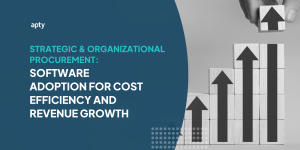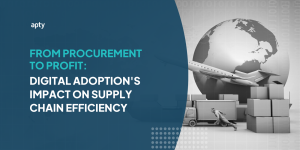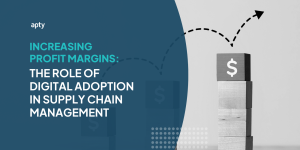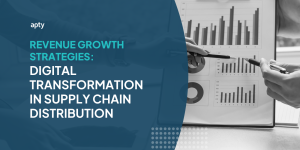The corporate world is rapidly changing. Many organizations are rethinking their business models and strategies to stay competitive and transition to the new remote/hybrid workforce. It has a knock-on effect on learning and development (L&D) departments.
64% of L&D experts agree that L&D shifted from a “nice to have” to a “need to have.” Change Management Training Programs tend to be the responsibility of the L&D Department. Many factors go into developing an effective change management program, from the need for assessment, design and development, implementation, evaluation, and continual improvement.
As L&D budgets come under scrutiny, it’s more important than ever to make a case for why and how your department is essential to the success of digital change management initiatives.
The catchy buzzword for businesses today: digital transformation. But don’t discount its genuine importance that increasingly grows year after year with the competitive progress of artificial intelligence (AI), machine learning (ML), ChatGPT, deep learning (DL)… The list goes on. Why do enterprises put digital transformation at the forefront of company goals?
- Improving customer experience
- Reducing friction
- Increasing productivity
- Elevating profitability
These, among others, indicate the digital transformation “why” for enterprises, according to Clario’s chief information & technology officer Jay Ferro. Enterprises leap toward digital changes and transformations to remain competitive as we move towards a more technology-driven workplace. Both our customers and employees expect more.
Let’s dive deeper and explore digital transformation, L&D’s change management role, and a better understanding of how to approach L&D budgeting for organizational change management initiatives.
What is Digital Transformation?
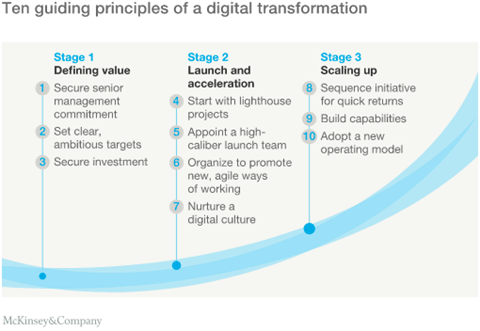
Source: McKinsey
Check out this interactive chart on the top objectives of organizations’ transformations by industry here.
Digital transformation involves leveraging technology to significantly enhance the performance and reach of a business to make better decisions, automating processes to improve efficiency, or creating new business models to meet evolving customer needs. Digital transformation uses digital technologies to fundamentally change how companies operate, interact with customers, and deliver value.
“Digital transformation is not about technology, it’s about people.” – Brian Solis, a digital analyst, and author, highlights the importance of human involvement in digital transformation.
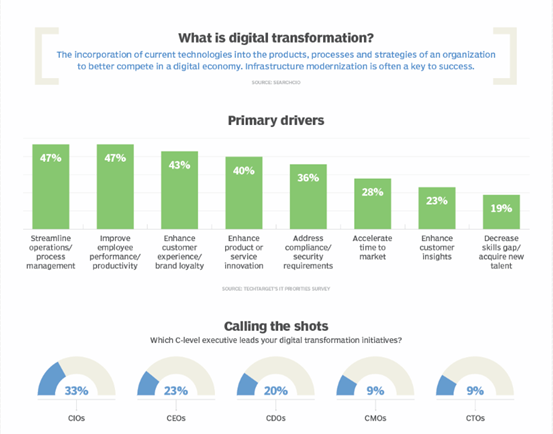
Source: Tech target
It involves integrating digital tools and systems across all aspects of the organization, including operations, marketing, sales, and customer service. It transforms customer relationships, internal processes, and value propositions.
To innovate, create, renew, or modify digital technologies that drive business processes, workplace culture, and customer experiences. – Salesforce
Many executives have witnessed digital technology’s rapid disruption of media industries over the past decade, prompting them to pay close attention to industry changes. According to a study by IDC, worldwide spending on digital transformation is expected to reach $3.4 trillion in 2026.
It is becoming crucial for companies to involve their employees in the digital transformation process and provide them with the necessary training and support. Only then can they harness the full potential of technology and achieve their business objectives.
Digital transformation requires a shift in mindset and culture, where companies must embrace new technologies and ways of working to stay ahead of the competition. Ultimately, digital transformation drives innovation and growth in the digital age.
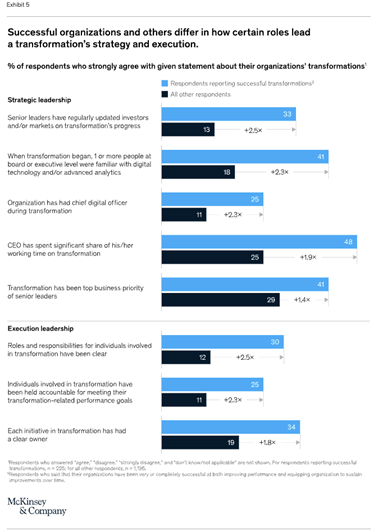
Source: McKinsey
It’s not just L&D thinking about how digital transformations affect their role and what they can do to achieve it. Increasing organizational resilience is a priority for CIOs reimagining work. Here are 4 key digital transformation leadership priorities in a Harvard Business Review Analytic Services report. – CIO & Harvard Business Review
- “The CIO’s New Task: Fighting Worker Burnout”
- “The Key to Success: Scaling Digital Acumen”
- Creating Agile Models, Ensuring Resilience
- Prioritizing the Employee Experience
Relevant Read: Digital Transformation Blogs
The Role of L&D in Digital Change Management
Learning and Development (L&D) professionals are instrumental in supporting organizations through digital change management by preparing employees, keeping them engaged, and developing their digital capabilities. By providing practical training, continuous support, and measuring the value of their programs, L&D professionals can ensure a smooth transition and maximize the benefits of digital transformation.
Preparing Employees for Digital Change
L&D professionals must provide the necessary training and development opportunities to adapt to digital change effectively. A LinkedIn report found that 94% of employees would stay at a company longer if it invested in their career development. An L&D team can design interactive e-learning modules or conduct hands-on workshops to familiarize employees with new tools, software, and digital processes. By providing comprehensive training, employees gain the confidence and skills necessary to navigate the digital landscape.
Keeping Employees Engaged
Continuous support and engaging learning opportunities are crucial to employee motivation and productivity during digital change. A Survey reported that engaged employees are 21% more productive than their disengaged counterparts. L&D professionals can implement microlearning modules, gamified training experiences, or virtual communities of practice to keep employees engaged throughout the digital transformation journey. These initiatives provide opportunities for knowledge sharing, peer collaboration, and ongoing skill development.
Developing Digital Capabilities
L&D professionals must collaborate with managers to identify the digital skills required for each job role and design targeted training programs. According to a survey by Gartner, 70% of employees have not mastered the skills they need for their jobs today. The L&D team can offer specialized training on data analytics tools for marketing professionals, enabling them to leverage data-driven insights for better decision-making and campaign optimization. Organizations can improve efficiency and innovation by equipping employees with relevant digital capabilities.
Measuring the Value of L&D in Digital Change Management
L&D professionals should measure the effectiveness of their programs and demonstrate the value they bring to digital change management initiatives. An ATD Research study found that organizations that measure the impact of learning are more likely to report business outcomes like increased revenue and market share. L&D teams can conduct pre-and post-training assessments to evaluate employees’ knowledge gain and skills improvement. They can also gather feedback through surveys or interviews to identify areas for improvement and tailor future training programs accordingly. By showcasing the positive impact of L&D initiatives on employee performance and organizational goals, L&D professionals can reinforce the importance of their role in digital change management.
Relevant Reads: Change Management Blogs
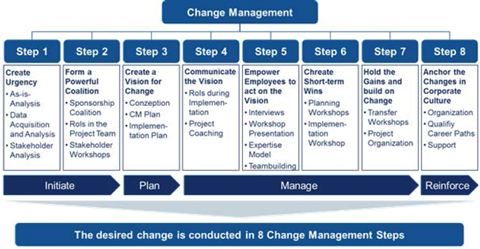
Source: PMI.org
L&D doesn’t need to own digital transformation throughout its entire lifecycle. Share the budget with other departments as the project evolves.
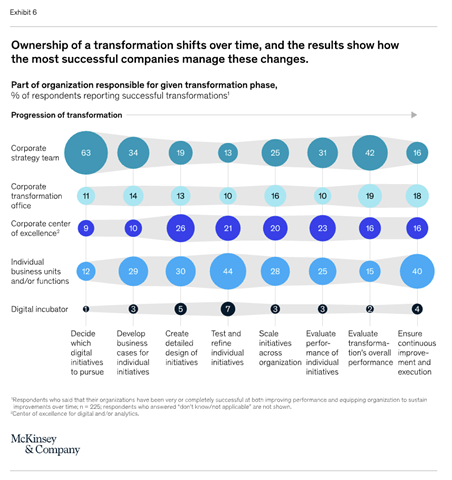
Source: McKinsey
Budgeting for Digital Change Management

Source: Scaled Agile
In a down economy with high turnover, leadership becomes more aware of change management challenges and pressures. Many organizations look for ways to cut costs and improve efficiency, and budgeting for change management becomes a great way to accomplish both goals.
Anyone who’s gone through a change management process knows that budgeting is a critical part of the process. After all, you can’t manage change well without knowing how much it will cost.
Change management costs range from 10-15% to 40% of the overall project budget, with 20% being the safe estimate.
Even with those basic parameters set, budgeting for change can be tricky. On the one hand, enterprises need to be realistic about the initiative’s costs. On the other hand, you don’t want to overspend and end up in the red. Your return on investment (ROI) is a large factor in determining success.
So how do you strike the right balance?
The basic best practices:
- Know your costs: Account for overhead, overtime, software, external consultants, software, training, onboarding, times and skills for process optimization and customization, and so on.
- Know your realistic bandwidth: What resources do you currently have at your disposal?
- Make a realistic estimate: Have a contingency fund. Some tend to pad their estimates by 5-10% to account for anything they missed or problems they may run into. But this may mean more research is needed to create a more accurate estimate. Don’t be afraid to ask for help. Resource by Asana for creating a project budget
- Track your spending: Utilize project tracking software or find a project cost-tracking Excel template.
- Be flexible: Enterprise and project agility is sometimes the key to success.
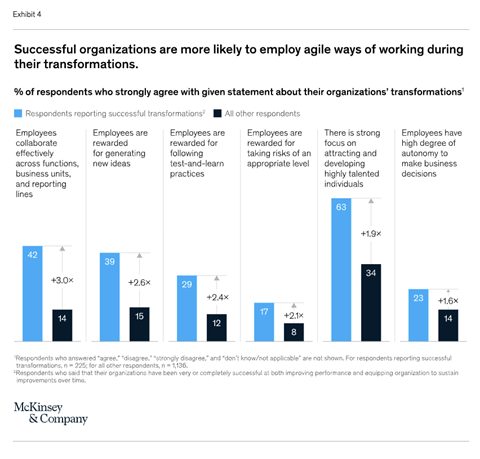
Source: McKinsey
What Do You Have to Consider in Your Digital Change Management Budget
As more enterprises realize the advantages of digital transformation, they need to make budget adjustments. The digital change management process requires a considerable financial commitment, which can be overwhelming and challenging. If you plan to implement a digital change project, you need to have a realistic budget.
Let’s examine essential considerations when creating your digital change management budget:
Identify Priorities and Objectives
Before elaborating on a budget for your digital shift, you must determine your priorities and set clear objectives. Establishing your goals will help you allocate resources to each project segment. Consider the technology, staff training, and external expertise required to deliver your objectives. In your budget, factor in the costs of procuring equipment and software, contracting outside expertise, and staff development.
Allocate Sufficient Resources
Identifying your priorities and setting objectives should be the next step in your budget to allocate adequate resources to fund the project. If you are working with a tight budget, consider the cost savings you can achieve by leveraging existing resources or SaaS solutions – like a software adoption solution – that leverage, optimize, and increase legacy stack ROI. For instance, you can explore the use of open-source technologies that are free to use, which can drastically reduce your project budget. Or, if your digital transformation is a new software implementation or update, utilize a digital adoption platform (DAP) on software shelfware or across enterprise applications to increase accurate tech use that improves employee productivity.
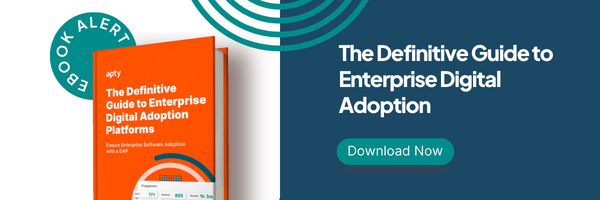
Factor in Change ManaFactor in Change Management Costsgement Costs
Change management is a crucial component of digital shift projects. It involves managing the transition process from current systems and processes to new digital technology. Therefore, change management costs should factor into your budget because creating a sustainable and feasible change management plan is vital. Incorporating personnel and change management systems such as communications and training into your budget will help to ensure a seamless transition.
According to digital education leaders, the primary change management costs include, but are not limited to:
- Change management resources (people)
- Training
- Communications
- Travel
- Time
- Change management materials
Be Realistic When Allocating the Cost
When creating a digital change management budget, be realistic. Do not underestimate costs that are likely to arise along the way. Ensure that you include helpful contingency strategies for unexpected expenses that will likely occur as the project progresses. Conduct a project risk analysis, identify possible pitfalls, and allocate sufficient resources to handle risks effectively.
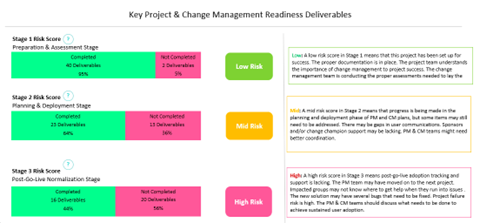
Source: OCM Solution
Template for a change management risk assessment matrix
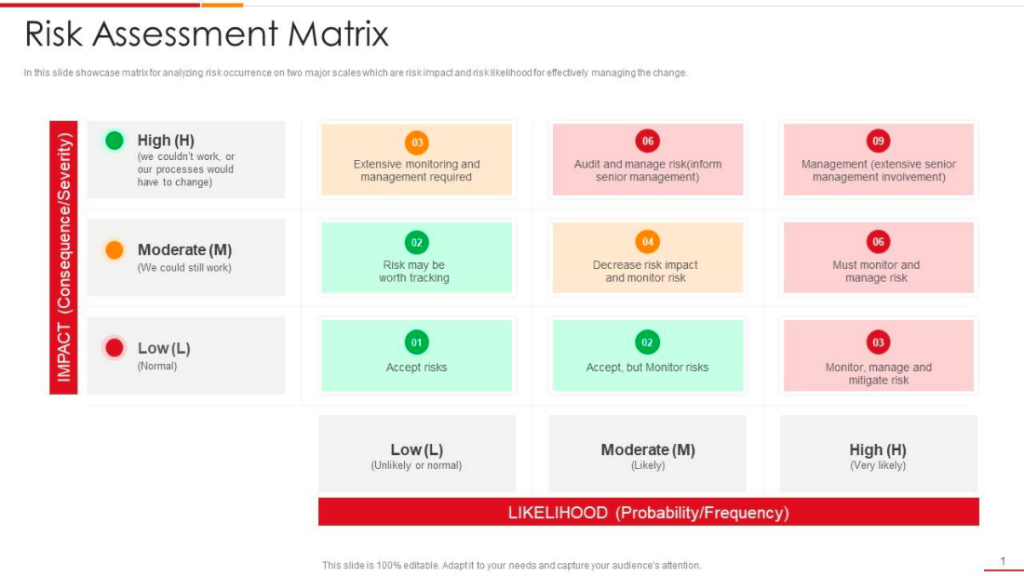
Source: Slide Team
Cost-Benefit Analysis
Incorporate a cost-benefit analysis in your digital change management budget. Assess the costs of implementing the system against the project’s expected returns. Quantify your expected benefits regarding productivity, efficiency, and revenue generation. When combined with the estimated project cost, the cost-benefit analysis will help determine whether the benefits outweigh the costs.
A comprehensive budget will enable you to avoid costly overspending or project failure due to insufficient funding.
Budget Approval Framework
Don’t forget about the basic factors that affect your budget and its approval.
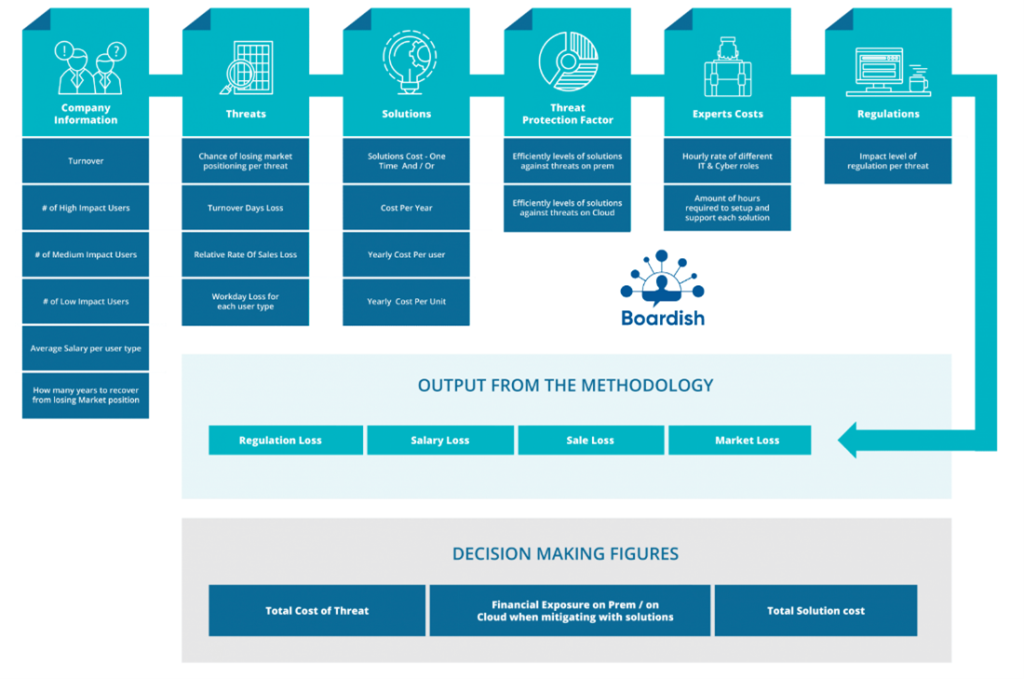
Source: Boardish.io
Garner buy-in and emphasize digital change management expenses to gain budget approval by tying KPIs and dollar amounts to organization OKRs, revenue, cost savings, customer retention and expansion, and employee productivity.
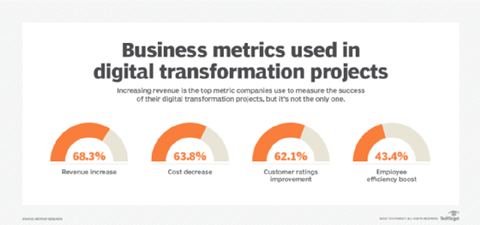
Source: TechTarget
How Do Different Industries Differ in Their Digital Change Management Plans?
Digital change management is considered during department reorganizations, acquisitions, mergers, onboarding/off-boarding, software launches/updates, digital changes, and so on.
Digital change management involves a comprehensive assessment of the organization’s current state, identifying areas that require improvement, and developing a strategy to implement those digital changes. Effective digital change management plans require the involvement of all stakeholders, including employees, customers, and partners. They also require a good culture of innovation and a willingness to embrace change. The success of these plans depends on careful planning, communication, and a commitment to continuous improvement.
Digital Change Management Plans in the Retail Industry

The retail industry has felt a significant impact on digital transformation. With the rise of e-commerce and mobile shopping, traditional brick-and-mortar stores must adapt to remain competitive.
Effective digital change management plans in the retail industry also involve upskilling employees to ensure they have the necessary skills to use new technologies and engage with customers in a digital environment.
Digital change management plans, in the retail industry often involve the integration of online and offline channels to create a seamless shopping experience for customers. It requires adopting new technologies like mobile payment systems, inventory management software, and data analytics tools. The main aim is to improve customer experience and drive growth using technology.
To fully unlock the potential of technology and accelerate their tech transformation journeys, retailers can take several concrete actions, such as adopting a journey-driven approach by taking an end-to-end customer perspective, enacting organizational change, and being willing to attempt the changes required to keep up with a competitive market.
In order to keep up with Amazon and other grocery stores, Walmart has transformed itself into a digital retailer. Customer experience has been improved through the use of AR and VR technologies.
Read more: Retail Digital Transformation Trends: Salesforce and Walmart

Digital Change Management Plans in the Airline Industry

The airline industry has been transformed by digital technologies, from online booking systems to in-flight entertainment. Digital change management plans in the airline industry often involve integrating different systems and processes to create a seamless passenger experience.
The airline industry is poised to grow exponentially thanks to emerging technologies. The pandemic has prompted industry participants to focus on digital transformation initiatives to enhance the customer experience, streamline operations, and conduct predictive maintenance. It includes mobile apps, self-check-in kiosks, and automated baggage handling systems.
Effective digital change management plans in the airline industry also involve using data analytics to optimize operations and improve the customer experience. However, the airline industry faces unique challenges, such as regulatory compliance and security concerns. Successful digital change management plans in the airline industry require a focus on safety, a commitment to innovation, and a willingness to collaborate with industry partners.
Read More: Aviation Change Management & Digital Transformation During an Economic Downturn
PROS emphasizes that digital transformation is of vital importance to the post-pandemic recovery of the aviation industry. They suggest the industry needs to continue to innovate and make small changes with a big impact. In addition, they describe how airlines like Eurowings Digital, AirAsia, and Volaris are moving closer to OTAs and digital retail platforms.

Digital Change Management Plans in the Healthcare Industry

The healthcare industry is undergoing a significant transformation driven by digital technologies. Digital change management plans in the healthcare industry often involve the implementation of electronic health records, telemedicine, and remote patient monitoring. New technologies, such as wearable devices and mobile apps, are needed to enable patients to take a more active role in their healthcare.
Effective digital change management plans in the healthcare industry also involve upskilling healthcare professionals to use and integrate new technologies into their workflows. However, the healthcare industry faces unique challenges like data privacy and security concerns. Successful digital change management plans in the healthcare industry require a focus on patient-centered care, a commitment to data privacy and security, and a willingness to collaborate with industry partners.
Healthcare organizations should prioritize change management, define the vision, prepare, and communicate the change effectively, create an integrated approach, align project management methodologies and principles, focus on four critical dimensions, and create a culture of digital transformation.
The Deloitte Center for Health Solutions conducted a research project to understand how health systems are using digital transformation to secure their organizations in the future. The research project involved members of large and medium-sized health systems. This project reveals that digital transformation is a new way to deliver healthcare, improve processes, and transform the relationship between the healthcare system and consumers.
Consider employee retention for a high turnover workforce after a pandemic. Ensure organized change management by involving them in digital CoEs, focus groups, surveys, and feedback loops. Upgrade their digital experiences through software adoption and in-app training tools that can follow them across applications to complete a full process.

Digital Change Management Plans in the Financial Industry
The financial industry has been at the forefront of digital transformation with the adoption of online banking, mobile payments, and digital wallets.
Digital change management plans in the financial industry involve systematically transitioning financial organizations from traditional, analog processes to digital systems and technologies. These plans aim to leverage digital tools and platforms to improve efficiency, enhance customer experience, and drive innovation within financial institutions. It even includes using artificial intelligence and machine learning to improve fraud detection and risk management.
It’s crucial to own the latest technologies to have an up-to-date portfolio in an industry that requires real-time decisions that instantly affect your wallet.
Effective digital change management plans in the financial industry also involve upskilling employees to ensure they have the necessary skills to use new technologies and engage with customers in a digital environment. However, the financial industry faces challenges like regulatory compliance and data privacy concerns. Successful digital change management plans in the financial industry require a focus on customer experience, a commitment to innovation, and a willingness to collaborate with industry partners. It’s important to note that each financial institution’s digital change management plan will vary based on its specific needs, capabilities, and market conditions.
Read more: Digital transformation in financial services in 2022: industry trends & examples.
Digital change management plans help businesses successfully navigate the complexities of digital transformation. Each industry faces unique challenges, but the common thread is a focus on customer-centricity, innovation, and collaboration. By adopting a strategic approach to digital change management, businesses can reap the benefits of new technologies while minimizing disruption and maximizing ROI.

Including Digital Adoption in Your Change Management Budget
Change is a constant in business, and organizations that want to survive and thrive must constantly adapt to changing market conditions, consumer preferences, and technological advancements. Change management prepares, supports, and helps individuals, teams, and organizations transition from the current state to the desired future. Change management is an essential part of any business transformation. However, change management can be complex, time-consuming, and expensive, and many organizations struggle to allocate their resources effectively. One area that is often overlooked in the change management budget is digital adoption.

Accelerate Change management with a Digital adoption center of excellence
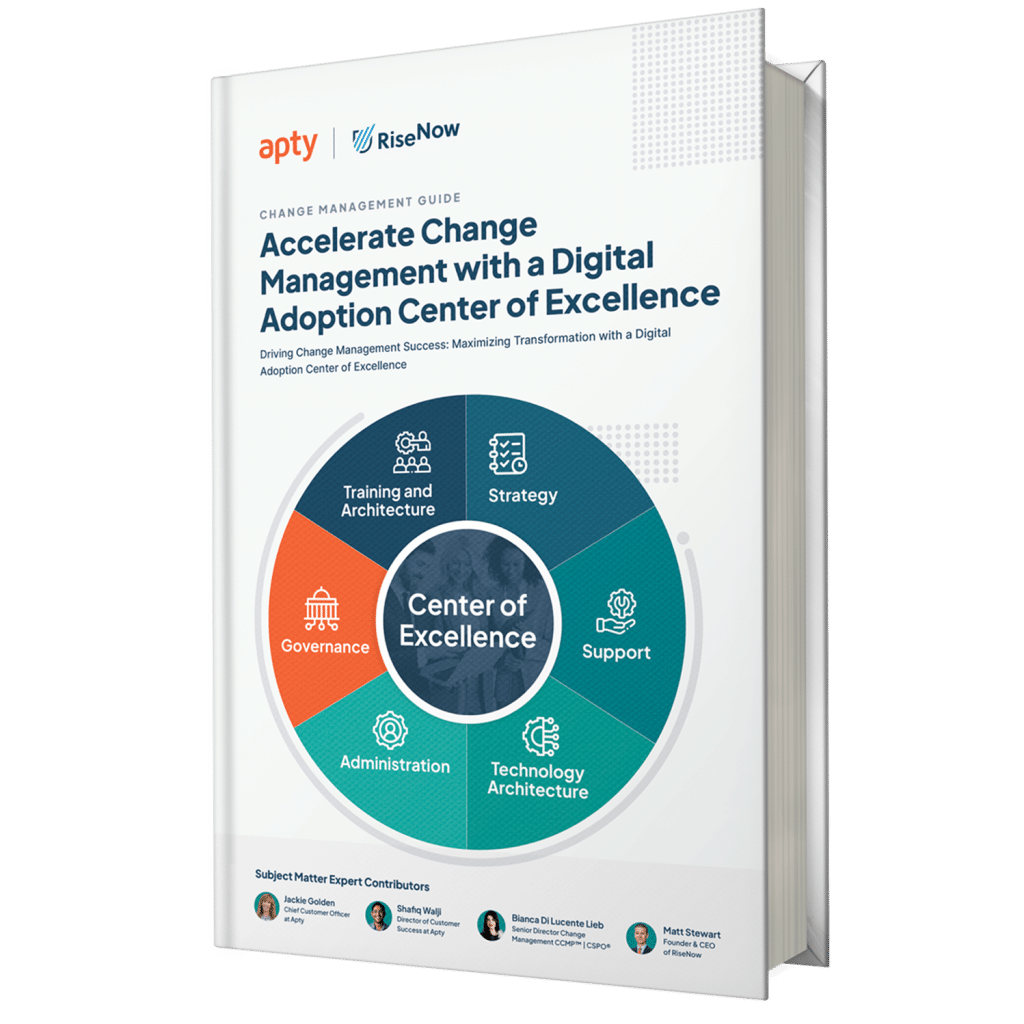
But What is Digital Adoption?
Digital adoption is the process of becoming proficient in using digital technologies, platforms, and tools to achieve business objectives, improve efficiency, and enhance customer experiences. It enables organizations to leverage the full potential of technology investments and stay competitive in a rapidly evolving digital landscape. For digital adoption to be successful, people must understand both the functionality and benefits of digital processes, gain a deep understanding of various advanced software features and comprehend how digital processes work and why they are needed.
CIOs and CTOs face issues like SaaS sprawl, software shelfware, employee resistance to digital change, and tasked with doing more with less. This year, they’ve turned heavily towards digital adoption tools.
Read More: Why Enterprises are Prioritizing Software Adoption in 2023
“You can’t make an organization change, but you can make change easier on an organization.” – Steve Clark, DAP expert.
Digital adoption requires more than just purchasing and implementing new technologies; it requires a cultural transformation that involves upskilling employees, redesigning processes, and creating a digital-first mindset. This is where change management comes in.
Integrating digital adoption into your change management budget can help you achieve your digital transformation goals more efficiently and effectively.
Key benefits of incorporating software adoption into your digital change management strategy
Integrating digital adoption into your change management budget can help you achieve your digital transformation goals more efficiently and effectively. Here are some key benefits of including digital adoption in your change management strategy:
1. Improved adoption rates: Research shows that up to 70% of digital transformation initiatives fail to achieve their objectives due to poor adoption rates. By including digital adoption in the change management plan, the organization ensures its employees are equipped with the necessary skills and tools to effectively use new technologies. It will even increase adoption rates and reduce the risk of project failure.
2. Faster time to value: The faster your employees can become proficient in using new technologies, the quicker business can realize the benefits of your digital transformation initiatives. Digital adoption can speed up the learning curve and reduce the time it takes to achieve ROI on your technology investments.
3. Enhanced employee engagement: Employees who are confident in their digital skills are more engaged, productive, and satisfied with their jobs. By investing in digital adoption, you are investing in your employees’ professional development and helping them stay relevant and valuable in a digital-first world.
4. Better customer experiences: Digital adoption enables organizations to deliver superior customer experiences by leveraging the power of digital technologies to personalize interactions, automate processes, and provide self-service options. By prioritizing digital adoption, you can differentiate your brand and meet the ever-increasing expectations of your customers.
Digital change management consultants, experts like RiseNow, and chief people officers like Christopher Lind of ChenMed emphasize the importance of a software adoption platform as the cornerstone of any tech stack. It cuts training and support costs, increasing employee productivity, process compliance, and software ROI.
How to Make Informed L&D Budget Decisions to Maximize Your Investment
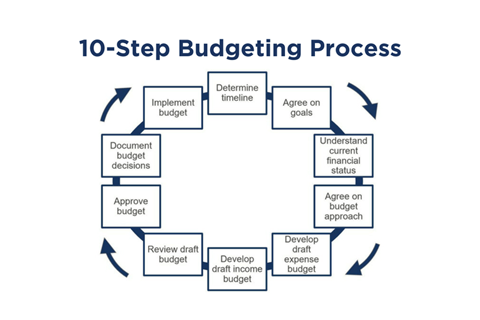
Source: Propel nonprofits
Research shows companies waste billions of dollars annually on ineffective learning and development (L&D) initiatives. As organizations increasingly recognize the importance of effective learning and development (L&D) programs to drive business growth and success, making informed budget decisions has become more critical than ever.
Investing in the right L&D solutions reveals significant returns, including increased employee productivity, improved talent retention, and higher customer satisfaction.
Making informed budget decisions requires a strategic approach that considers your organization’s unique needs and goals and the costs and potential value of various L&D solutions. With the right strategy in place, you can maximize your L&D investment, drive business growth, and support a culture of continuous learning.
Employees are constantly exposed to new information and apps in the modern workplace. It can be overwhelming and frustrating, leading to low adoption rates and decreased productivity. This is where in-app employee support comes into play. Employees can quickly learn how to use new tools and be more productive by providing targeted training and guidance within the app. By investing in in-app employee support solutions such as digital adoption platforms (DAPs), organizations can help reduce this friction. DAPs provide employees with the guidance they need within the applications they are using daily. Organizations can increase efficiency and productivity while lowering frustration by simplifying complex workflows and providing contextualized training within an employee’s workflow.
Relevant Read: Apty DAP named ‘Leader in DAP Category’ by G2
In-app support can help alleviate the stress of learning new software during significant change, such as transitioning from physical office space to a remote work environment or adapting enterprise software after a merger or acquisition. Offering immediate help at every step of the adoption process gives employees confidence that they will succeed in their work. The transition to hybrid/remote work models has opened up new opportunities for companies to invest in employee education. By leveraging DAPs, organizations can ensure that remote workers receive the same level of support as their in-office counterparts, leading to a more engaged and productive workforce.
How can Managers Make Informed Decisions About their L&D Budget?

It’s no secret that managers must make tough decisions when it comes to their budgets. But when it comes to learning and development (L&D), there are some key things to keep in mind that can help you make the best decisions for your team:
Know your company’s overall budget and priorities
Before making any decisions about your L&D budget, managers must clearly understand your company’s overall budget and priorities. It will help you determine how much money you can allocate towards L&D and how it fits into the larger picture of your company’s goals.
Define your L&D goals and objectives
In order to make the most of your L&D budget, managers need to have a clear understanding of the goals and objectives. Are there any skills you would like your employees to develop? What areas are you looking to improve in your business? How can you improve the business? Defining these goals and objectives will help you determine where to focus your L&D efforts and how to measure success.
Assess current L&D offerings
Before investing in new L&D initiatives, assessing your current offerings is crucial. What is working well? What needs improvement? It will help you determine what areas to focus on in your L&D budget and where to allocate resources.
Align the L&D budget with other budgets
When making decisions about your L&D budget, it’s important to consider how it aligns with other appropriations. For example, if you’re investing in new technology requiring training, you may need to allocate more funds towards L&D to ensure a successful implementation.
Understand L&D ROI
Understanding the return on investment (ROI) of your L&D initiatives means measuring the training programs’ impact on employee performance and business outcomes. By understanding the ROI, managers can make more informed decisions about where to allocate the L&D budget.
Get input from stakeholders
When making decisions about their L&D budget, managers should get input from stakeholders across the organization, including managers, employees, and customers. Gathering feedback and information ensures managers that their L&D initiatives align with the needs and priorities of the organization as a whole.
Develop a comprehensive plan
In order to make the most of your L&D budget, developing a comprehensive plan should include a detailed breakdown of their goals and objectives, as well as the specific initiatives and programs you plan to invest in. It is in the manager’s interest to ensure that the L&D budget is used effectively by having a clear plan.
Make use of data
It can include employee performance metrics and feedback from training programs. You can maximize the effectiveness of your L&D budget by using data to inform your decisions.
Consider the budget cycle
Finally, it’s important to consider the budget cycle when making decisions about your L&D budget. Depending on your company’s fiscal year and seasonal sales cycles, there may be certain times when it’s more advantageous to invest in L&D initiatives. Understanding the budget cycle will enable managers to maximize the reach of their learning and development budget.
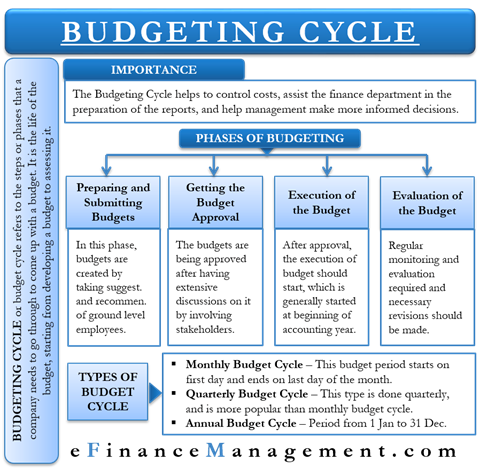
Source: efinance management
How Digital Adoption Platforms Can Transform Software and Training Costs in Learning & Development
Reduction in Training Costs
Traditional training methods can be time-consuming and costly. However, a DAP offers a more efficient and effective solution, on-the-go training within the software.This training type is cost-effective, more relevant, and personalized to each user’s needs. Furthermore, DAPs facilitate self-paced learning, allowing employees to learn at their speed, reducing pressure, and increasing comprehension. This significantly reduces your L&D costs while providing a more effective training approach that resonates better with modern employees.
Maximizing Software ROI
Every software investment should contribute to a company’s bottom line. However, this isn’t always the case, especially when employees struggle to fully use the software features due to a lack of understanding. This gap between the software’s potential and actual usage is often called the ‘software utilization gap.’
DAP bridges this gap by providing personalized, in-app guidance, helping employees leverage software features to their fullest potential. It boosts productivity and maximizes the software’s return on investment (ROI).
Faster Onboarding
DAP can shorten the learning curve during the onboarding process. New employees can quickly become proficient in using software applications with step-by-step guidance, tooltips, and interactive walkthroughs. Consequently, they can start contributing to their roles more efficiently, increasing productivity.
Decrease in Support Costs
With a DAP’s in-app guidance and training, users will likely avoid issues or confusion when using new software. This reduces the dependence on IT and support teams, lowering support costs. Moreover, with a DAP, your support team can focus more on complex issues rather than resolving fundamental software usage problems.
Insights for Continuous Improvement
A robust DAP provides insightful analytics to track user behavior and software usage patterns. These insights can help identify areas of improvement in user adoption and engagement, contributing to the continuous refinement of training programs. This data-driven approach ensures that your L&D initiatives remain relevant, effective, and cost-efficient.
Continuous Learning and Updates
Software applications are regularly updated with new features and improvements. DAPs can keep employees informed about these changes and guide them through the updates, ensuring they remain up-to-date with the latest functionalities without additional training.
Remote Work Enablement
With the rise of remote work, DAPs can be crucial in providing remote employees with the necessary training and guidance, regardless of their physical location. This can save costs associated with travel and accommodate a geographically dispersed workforce.

